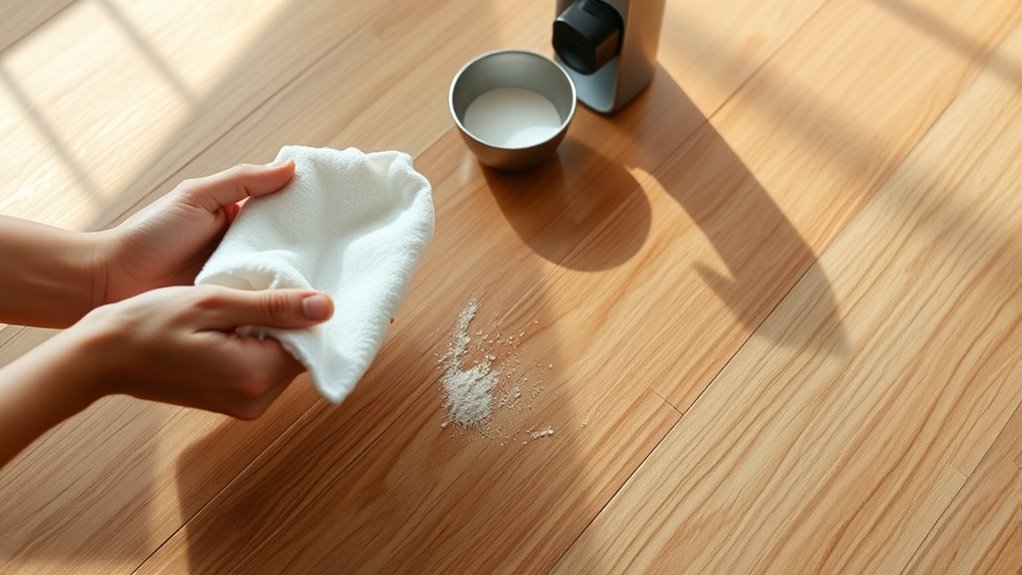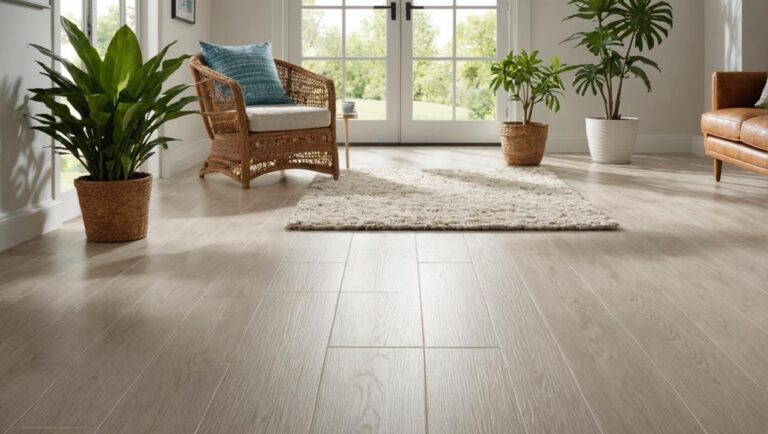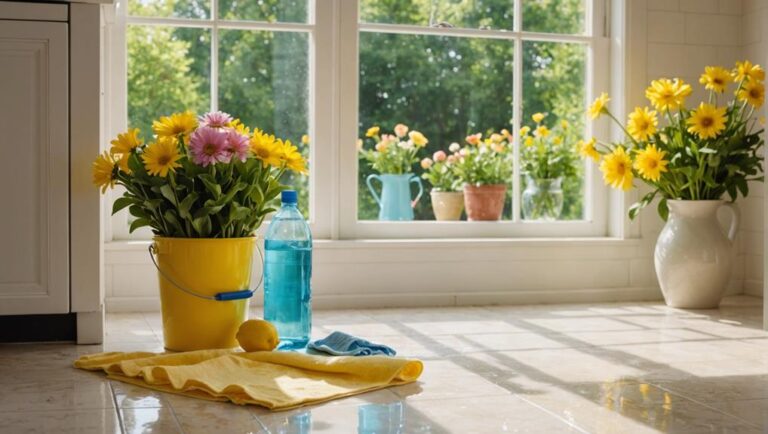You can quickly remove scuff marks using common household items like a vinegar-and-water mix—just spray and wipe with a soft cloth—or a baking soda paste applied in circular motions for tougher marks. Magic erasers also work well but test them on a hidden spot first. Always follow up by wiping the area clean. To keep floors scuff-free longer, simple prevention and regular care go a long way. Keep going to discover effective products and practical tips for maintaining your floors.
Identifying Different Types of Floor Scuff Marks
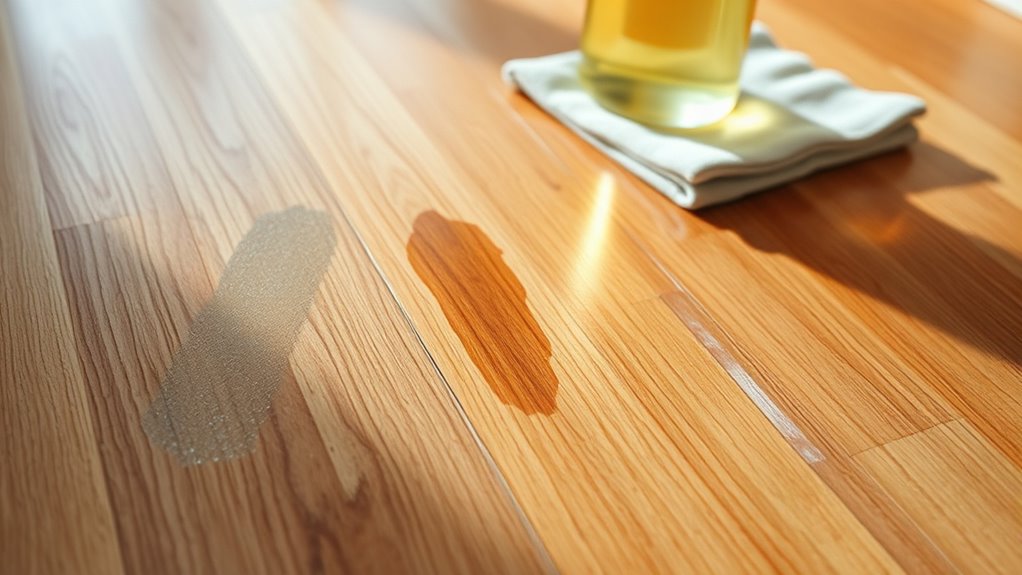
Before you can effectively remove scuff marks from your floors, it’s important to identify what type of marks you’re dealing with. Scuff mark causes vary depending on your environment—shoe soles, furniture movement, or heavy traffic are common culprits. Recognizing the types of flooring you have—whether hardwood, tile, vinyl, or laminate—also guides your approach. For example, rubber-soled shoes tend to leave darker, more stubborn scuffs, especially on smooth surfaces like hardwood or vinyl. On textured floors, dirt and debris may embed, creating stains rather than just marks. By pinpointing the specific scuff mark cause and your flooring type, you’ll be better equipped to choose the right removal method. This understanding lets you reclaim your space without damaging your floors, giving you freedom from persistent blemishes.
Using Household Items to Erase Scuff Marks
Several common household items can effectively erase scuff marks without harsh chemicals or special tools. Start by making a vinegar solution—mix equal parts white vinegar and water in a spray bottle. Lightly spray the scuff and wipe with a soft cloth. For tougher marks, try a paste of baking soda and water. Apply it gently with a damp cloth, rubbing in circular motions until the mark fades. Both methods rely on mild abrasiveness and natural cleaning power, preserving your floor’s finish. After treatment, wipe the area with a clean damp cloth to remove any residue. These simple solutions give you freedom from harsh chemicals while tackling scuffs efficiently. Keep these items handy for quick, effective scuff removal whenever needed.
Best Products for Removing Scuff Marks Safely
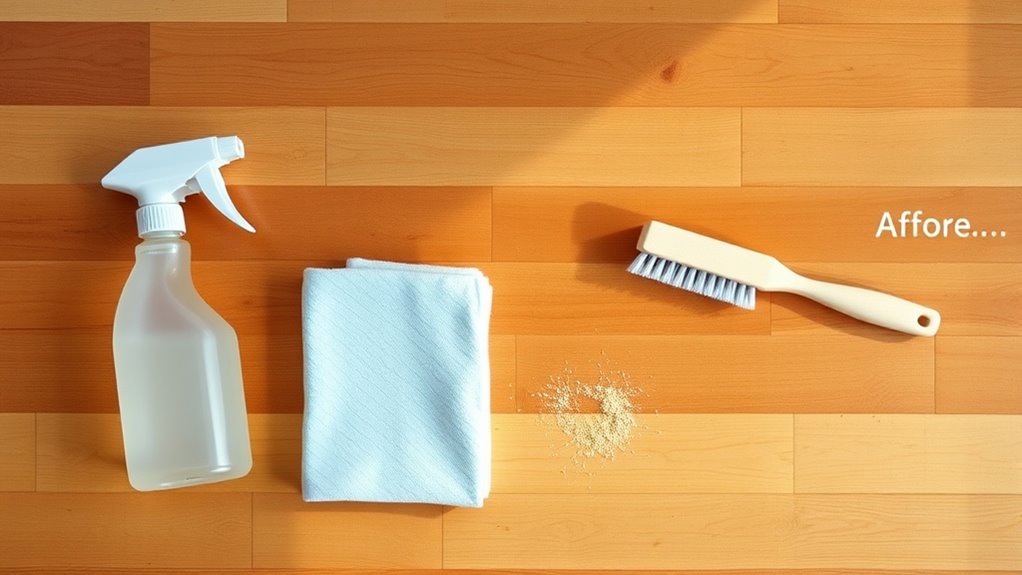
Wondering which products work best to remove scuff marks without damaging your floors? Choosing from the best cleaning solutions guarantees effective scuff removers tackle marks safely and efficiently. Look for products labeled non-abrasive and suitable for your 床 type—whether hardwood, laminate, or tile. Magic erasers are popular, offering gentle yet powerful removal, but test in an inconspicuous spot first. Commercial floor cleaners designed specifically for scuffs often contain mild solvents that lift marks without stripping finishes. Avoid harsh chemicals that can dull or harm surfaces. Using these targeted products lets you restore your floors with minimal effort and risk, giving you the freedom to keep your space looking fresh and clean without worry. Stick to recommended options for the safest, most effective results.
Preventive Measures to Avoid Future Scuffs
Though removing scuff marks is important, preventing them in the first place will save you time and effort. Start by investing in proper floor protection, like placing felt pads under furniture legs to minimize direct contact and reduce friction. Use area rugs or mats in high-traffic zones to absorb impact and guard against dirt and grit that cause scuffs. Regularly clean floors to prevent abrasive particles from accumulating, which can lead to scratches. Encourage shoes-off policies indoors to cut down on scuff-causing debris and hard soles. For scuff prevention, choose footwear with soft soles when possible, especially in delicate floor areas. By implementing these practical measures, you’ll maintain your floor’s appearance longer and enjoy more freedom from constant scuff removal chores.
Tips for Maintaining a Scuff-Free Floor Surface
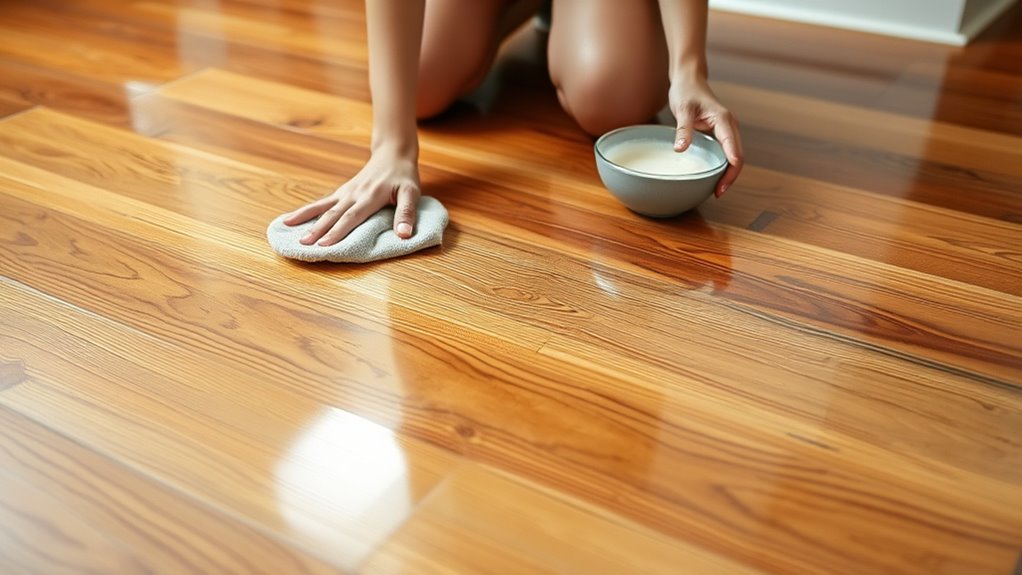
Keeping your floors free from scuff marks takes consistent care beyond just prevention. To maintain a scuff-free floor surface, establish a regular cleaning routine that includes sweeping or vacuuming daily to remove abrasive dirt and grit. Use a damp mop with a gentle floor cleaner suitable for your floor type to avoid damage. Incorporate floor care practices like placing protective pads under furniture legs and encouraging shoe removal indoors to minimize wear. Address any spills or marks immediately to prevent stains or lasting damage. Regularly inspect high-traffic areas for early signs of scuffs and treat them promptly. By committing to these simple habits, you’ll enjoy floors that stay clean and scuff-free longer, giving you more freedom to focus on what matters without constant floor maintenance worries.

